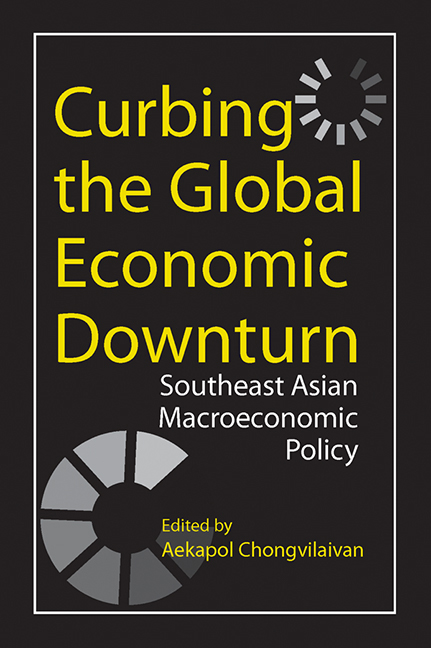Book contents
- Frontmatter
- Contents
- Acknowledgements
- Introduction
- List of Contributors
- PART I Economic Fluctuations: Macroeconomic Effects and Policy Responses
- PART II Economic Co-operation in Southeast Asia
- 6 Gains from Intra- and Inter-Regional Trade and Economic Co-operation
- 7 From Economic Reform to Closer Economic Ties: Regional- and National-Level Issues
- 8 Macroeconomic Surveillance and Financial Co-operation
- Index
7 - From Economic Reform to Closer Economic Ties: Regional- and National-Level Issues
from PART II - Economic Co-operation in Southeast Asia
Published online by Cambridge University Press: 21 October 2015
- Frontmatter
- Contents
- Acknowledgements
- Introduction
- List of Contributors
- PART I Economic Fluctuations: Macroeconomic Effects and Policy Responses
- PART II Economic Co-operation in Southeast Asia
- 6 Gains from Intra- and Inter-Regional Trade and Economic Co-operation
- 7 From Economic Reform to Closer Economic Ties: Regional- and National-Level Issues
- 8 Macroeconomic Surveillance and Financial Co-operation
- Index
Summary
INTRODUCTION
Over the past decade, efforts at promoting closer regionalism in East Asia have been stepped up for various reasons, including: (i) a response to the experience and lessons of the 1997 financial crisis; (ii) the gridlock in the Doha round, success of North American Free Trade Agreement (NAFTA), and expansion of the EU; (iii) the mitigation of political factors that prevented closer co-operation in the past, for example, competition between China and Japan; and (iv) the perception that ASEAN economic integration will not progress far unless other East Asian economies are involved.
One major constraint to this process is the large disparity in economic development in East Asia. Table 1 depicts the situation for fourteen countries of East Asia and the ASEAN member countries including Timor Leste. In terms of per capita income in PPP$, East Asia has the largest disparity when compared to other regional groupings: Latin America, Europe, South Asia, and North Africa. Studies have shown (for example, Venables 2003) that a large disparity in economic development will hinder efforts towards greater economic integration.
This paper examines various policies at the regional and national level that can help narrow the development gap and at the same time increase the chances for effective and meaningful economic integration. At the national level, these policies can be considered as necessary conditions for successful trade liberalization and financial co-operation. Free flow of goods and services is a minimum requirement for ASEAN to function as a single market. On the other hand financial co-operation and integration of financial markets provides a valuable window of opportunity to foment macroeconomic stability and reduce vulnerabilities.
In this context, the following questions will be considered: What are the structural constraints to growth in the Philippines? What institutional and economic reforms, thus far, have been implemented? What factors prompted these reforms? What institutional and economic reforms are needed or lacking?
- Type
- Chapter
- Information
- Curbing the Global Economic DownturnSoutheast Asian Macroeconomic Policy, pp. 124 - 149Publisher: ISEAS–Yusof Ishak InstitutePrint publication year: 2010



